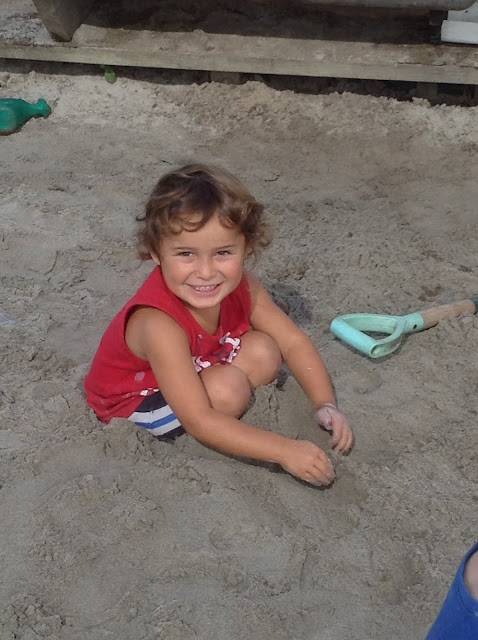The sandpit is always a popular place to play at kindergarten.
The level of the sand in the sandpit has been looking a little low as of late, so we thought we'd top it up a little. At Bream Bay Kindergarten we don't believe in doing things by halves, so a little bit of sand wasn't a few wheelbarrow loads and it wasn't a trailer load of sand either... we were very fortunate to have Atlas Concrete donate a truckload of sand!
The children watched (from a safe distance) the huge truck manoeuvre within the confines of the kindergarten playground.
The children have relished having new sand in the sandpit this week and it has been a popular and creative place to play and learn.
"Children
have always been intrigued by sand play. They dig in sand, sift it, build with
it, pour it, enjoy the feel and smell of it, pretend with it, and explore how
it moves. Sand is well-suited to the explorative and imaginative
nature of young children.
There is no
right way to use sand. It invites participation; it permits children to make
and test hypotheses; it stretches the imagination; it provides a potentially
soothing sensory experience; and it is an excellent avenue for children to
learn physical, cognitive, and social skills." (Crosser, 2008).
There are many benefits of sand play.
Sand play benefits language development as children communicate with each other. They learn social skills as they work together and share a limited space. Children develop and add to their sensory vocabulary as sand can be gritty, fine, coarse, rough, smooth, dry, squishy,...
and what better way to feel the sand than to cover yourself with it!
Sand play also promotes physical development. Children develop large muscle skills when they dig, shovel, lift, and scoop sand. They improve small muscle control and hand-eye coordination when they mould, pat, and pour sand.
Children also learn about and experience impermanence. Sandcastles get squashed and roads get wiped away. In the sandpit everything changes, nothing stays the same. Children learn to enjoy the moment and create something new next time.
"Whether shaped into castles, dug, dripped, sifted, or buried, sand can take many different forms, thus offering endless opportunities for fun and learning". (Pathways, 2017).




























No comments:
Post a Comment